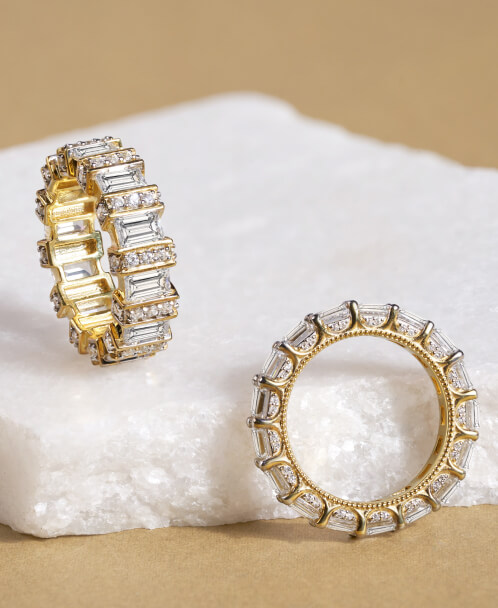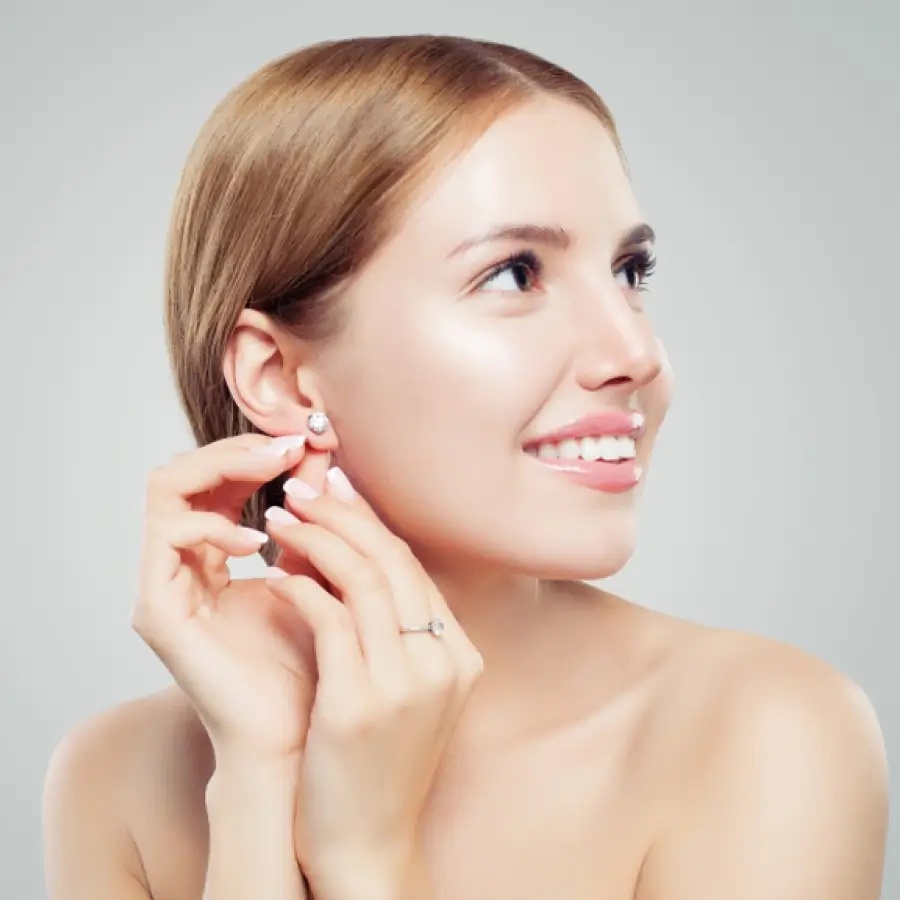Shine bright like… Well, you!
Buying a diamond is kind of like walking down the makeup aisle and having to choose different shades of foundation or picking the "perfect white" to coat the walls of your living room. There's a difference between having a choice and having too many options. The same rule applies when it comes to diamond shopping! It's common to get confused or feel overwhelmed when you come across so many options.
That's where we come in. We want you to be able to choose the diamond of your dreams as happily and willingly as you'd say "yes!" to your soulmate!
In this blog, we're giving you the lowdown on the sparkly stuff, diamond color, and clarity in a fun, easy way that'll add sparkle to your day. It's as simple as selecting the right outfit or the right show to watch on Netflix next. Let's get into it!
Table of Content
What Is Diamond Color?
Let's start with the basics. When we talk about diamond color, we aren’t necessarily referring to vivid blues or pinks, although yes, those too are a thing. For traditional white diamonds, however, color specifically refers to how colorless a diamond is.
The International Gemological Institute (IGI) and Gemological Institute of America (GIA), which are two of the most trusted gemological institutes in the world, grade diamonds on a scale of D to Z. The D graded diamonds are colorless without any color tint.
Think of it as when you order a drink at a café. Would you prefer black coffee, coffee with a splash of milk, or a full-on latte? All are safe choices, but with different preferences in mind.
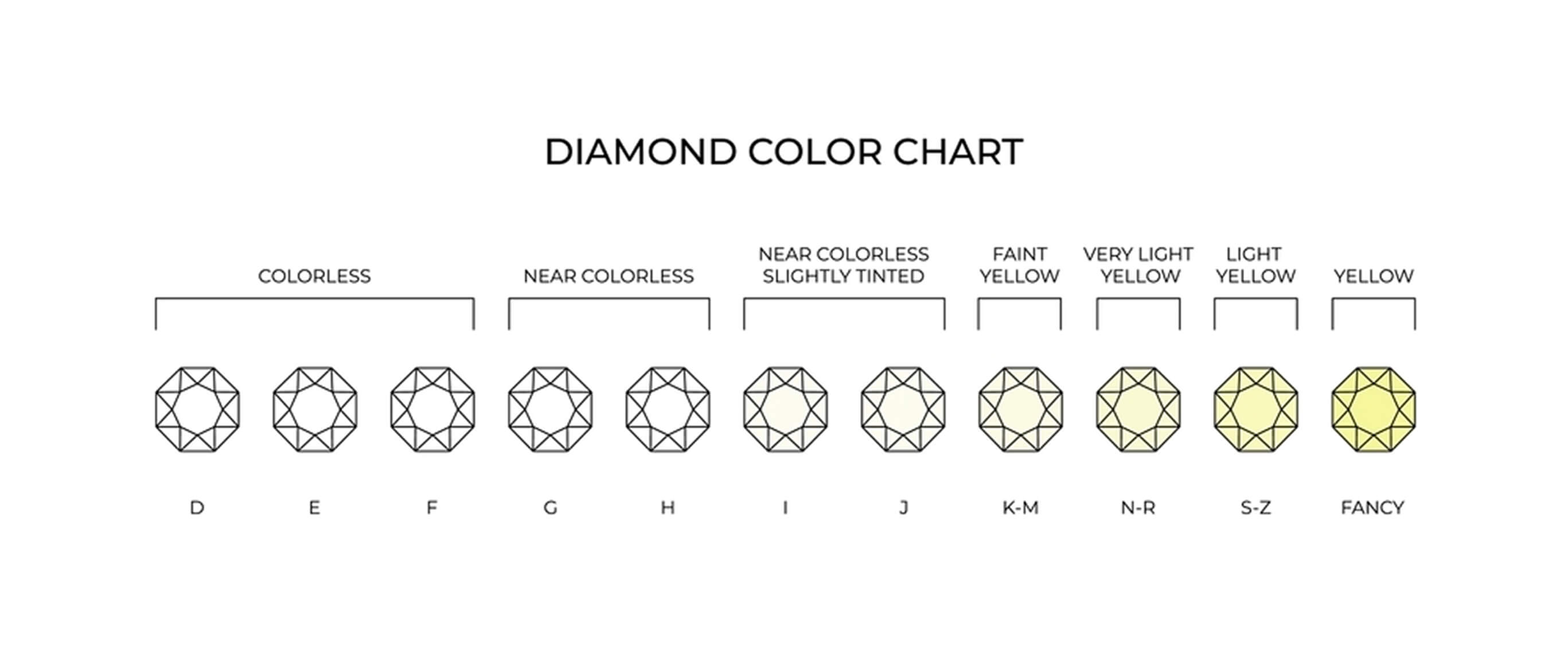
Pro tip: Most diamonds between G and J on the scale have a slight yellow tint, which is not visible to the naked eye, and still look gorgeously white, especially when they are in a ring setting. You don’t always need a top-shelf D to find that breathtaking sparkler.
The Scoop on Diamond Clarity
Now let’s talk about diamond clarity, aka how “clean” the diamond is on the inside. Clarity is about the number of tiny flaws called inclusions (internal) and blemishes (external). They naturally happen when diamonds are formed and are 100% normal.
The diamond clarity grading scale is as follows:
-
FL: Flawless
-
IF: Internally Flawless
-
VVS1 – VVS2: Very, Very Slightly Included
-
VS1 – VS2: Very Slightly Included
-
SI1 – SI2: Slightly Included
-
I1 – I3: Included
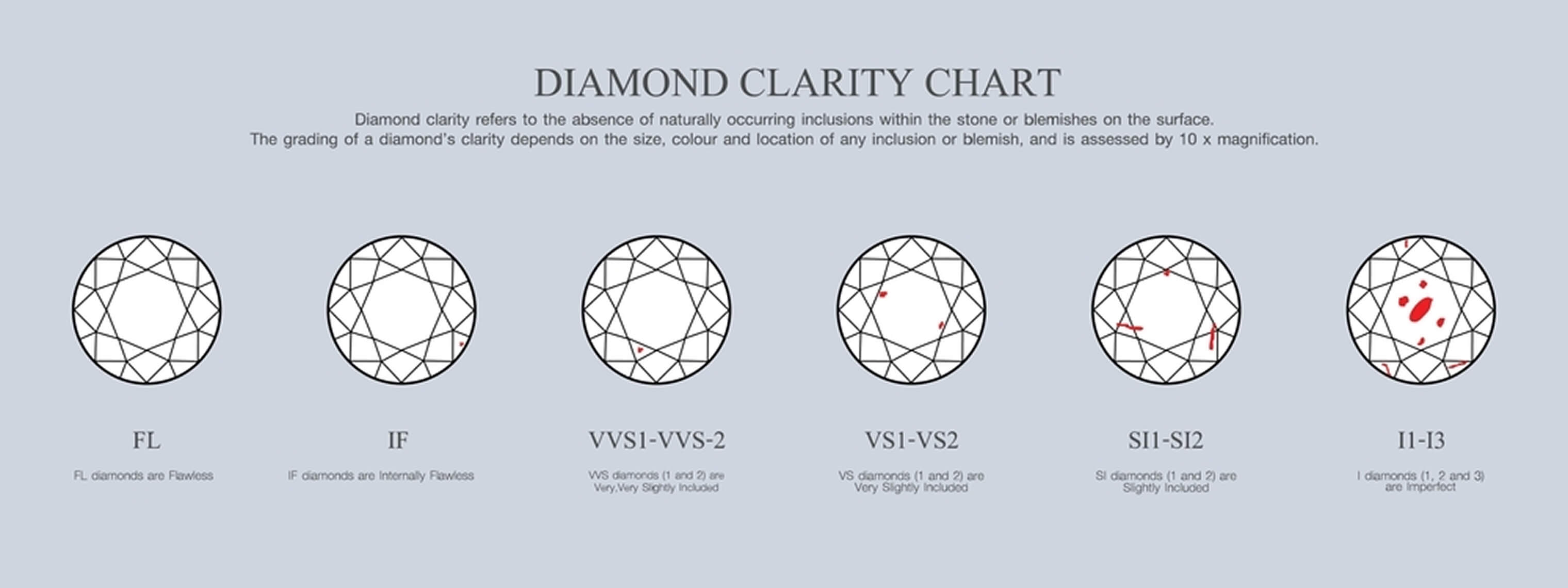
Most inclusions are so minute that you don’t really notice them unless you’re peering into the diamond through a magnifier or jeweler’s loupe.
So, why do inclusions matter? They affect how the diamond plays with light and how it makes the diamond sparkle. But don’t worry, many diamonds with slightly lower clarity grades dazzle like diamonds will dazzle.
Why Diamond Color and Clarity Actually Matter?
You’re probably wondering, “So how do diamond color and clarity affect the overall look of my diamond?”
Great question! Both impact how brilliant, sparkly, and bright a diamond appears. A diamond with high clarity but low color may not appear as brilliant as a diamond with mid-range clarity and a higher color, or vice versa. It’s all about how the combination of the two looks to your eye.
The way you think about buying a diamond can be like buying a dress. You want it to be good-looking, draw attention, and fit your lifestyle. The material (clarity) and color shade (color) matter, but it is the combination that really makes it shine.
Diamond Shopping Doesn’t Have to Be Scary
We understand diamond shopping can be like learning a new language. But when you dissect the details, it's actually about determining what suits your style and budget.
If you're all about a brilliant, white glint, prioritize diamond color. If you desire that crystal-clear appearance, prioritize better diamond clarity. But the best part of all here is that you can definitely mix and match depending on what is most important to you. You don't have to go high-end on everything. For instance, a diamond that has a G or H color and VS2 clarity can provide you with the appearance of a high-end diamond without the high-end cost.
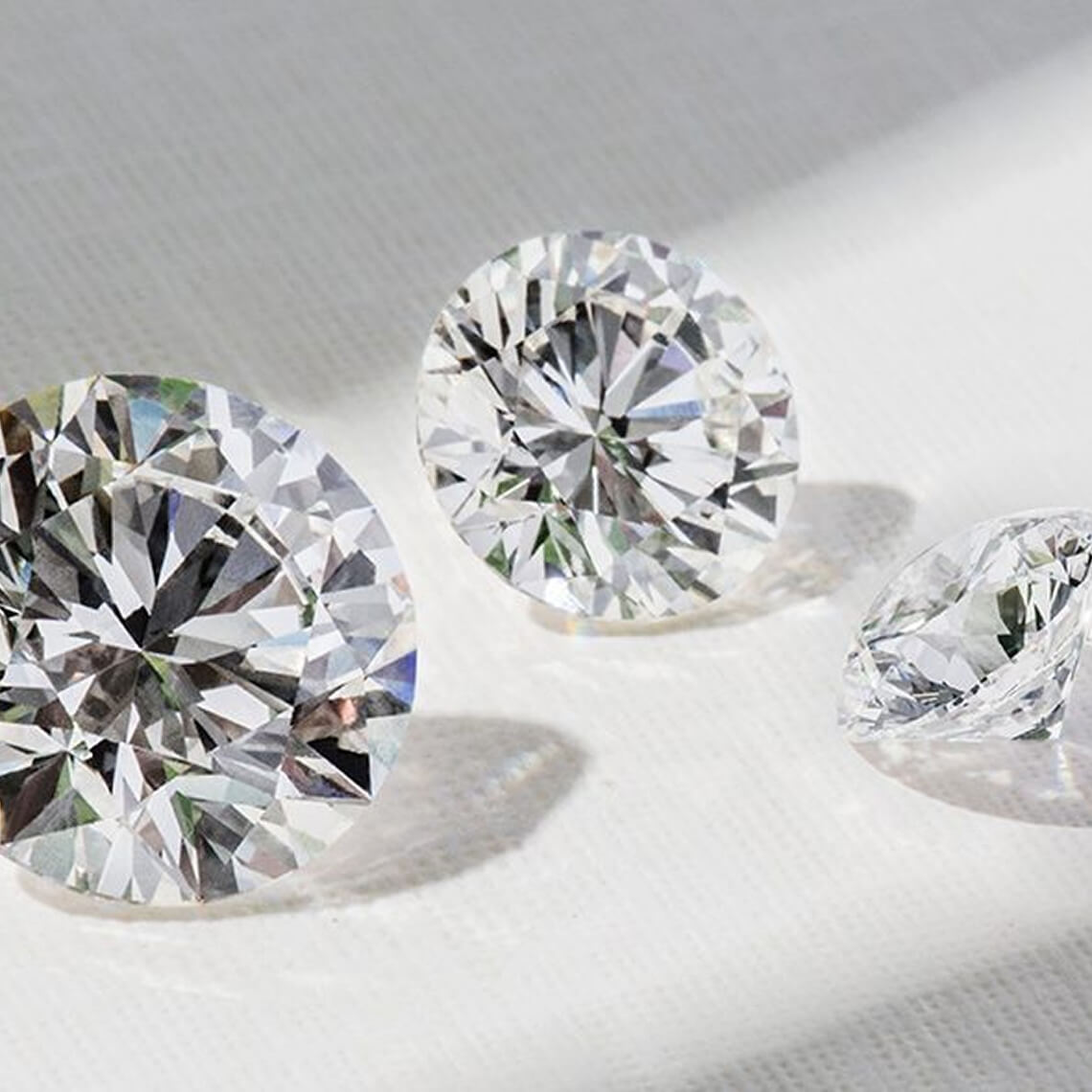
SHOP LAB DIAMONDS
At Friendly Diamonds, we make it simple and fun. You can pre-screen selections online, compare clarity and color grades side by side, and even imagine how they'd look in other circumstances. It's window shopping… with bling.
Looking for a Pop of Color?
Now, for something a little more playful, let’s talk about fancy colored diamonds!
While white diamonds are graded by the absence of color, fancy colored diamonds are graded for the presence of beautiful colors. These include fancy yellow, fancy pink, and fancy blue, and yes, they’re just as beautiful as they sound.
Friendly Diamonds’ exclusive Hues collection draws inspiration from the most romantic moments of nature: sunsets, starry nights, and early morning skies. Featuring colored lab-grown diamonds, each ring is not only rare and beautiful but also carries its own significance.
Whether you’re hoping for an engagement ring made from a yellow diamond that gives off positively sunny vibes or a pink one that feels soft and romantic, we’ve got a little something that reflects your personal style.
Getting The Biggest Sparkle For Your Budget
Let’s talk about money, because spending your means doesn’t mean giving up on sparkle.
One of the savviest things you can do to maximize value is to experiment with diamond color and clarity. You can opt for a color grade such as H rather than E or clarity grade as VS1 rather than VVS1 and still have a beautiful diamond that shines like mad.
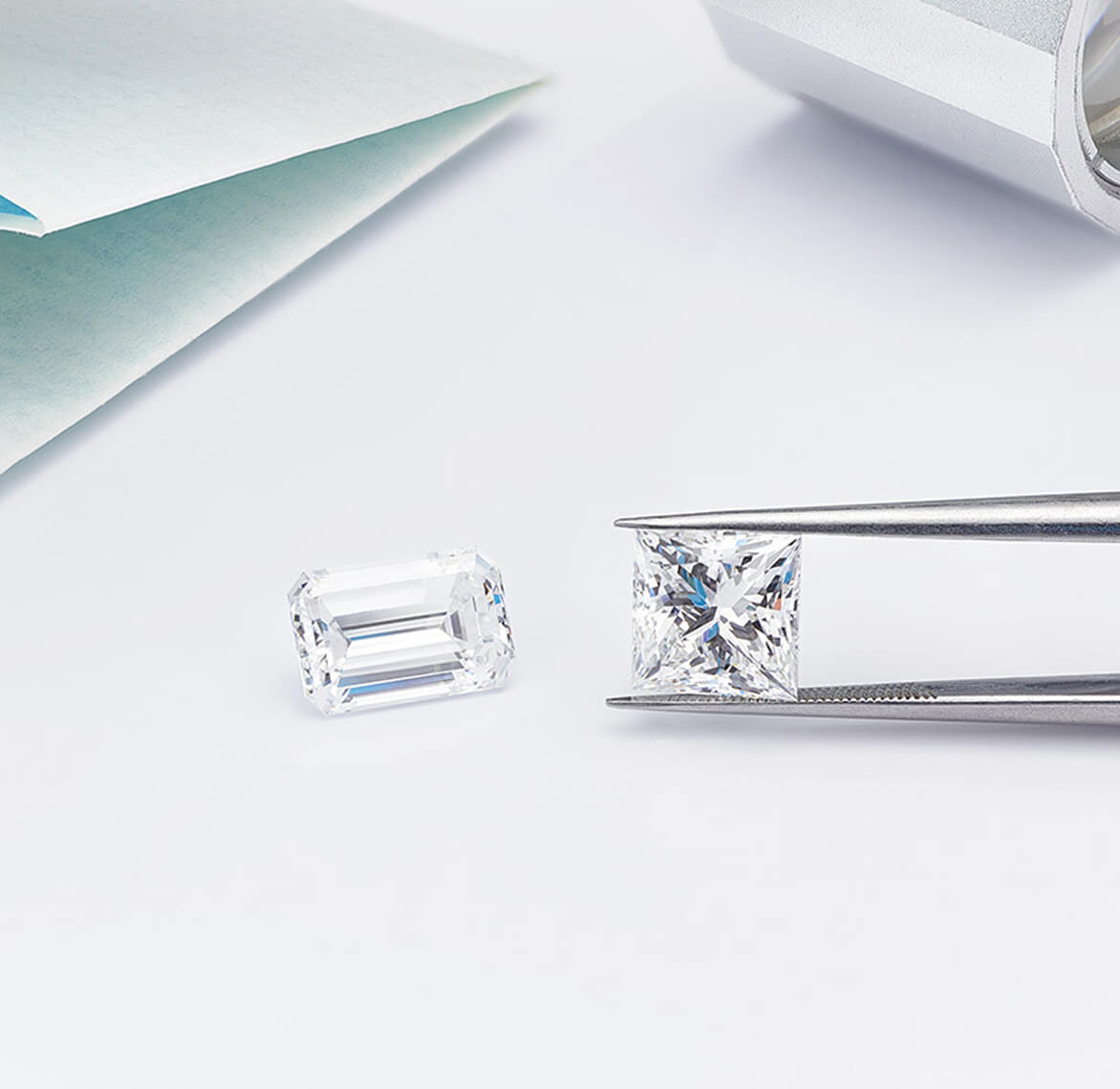
This is especially true when you're shopping for lab-grown stones like the ones we offer at Friendly Diamonds. Lab-grown diamonds are identical to natural mined diamonds in every chemical, physical, and visual way but are almost always much gentler on your wallet. More carats, more sparkle, more money in your pocket for that lavish honeymoon.
Diamond Buying Checklist
Here’s a checklist to keep in your back pocket when you go shopping:
-
Set your budget.
-
Select your shape (round, oval, emerald, etc.). Go crazy!!
-
Pick out your favorite diamond color.
-
Choose the diamond clarity grade you like.
-
Select a setting that draws attention to your diamond.
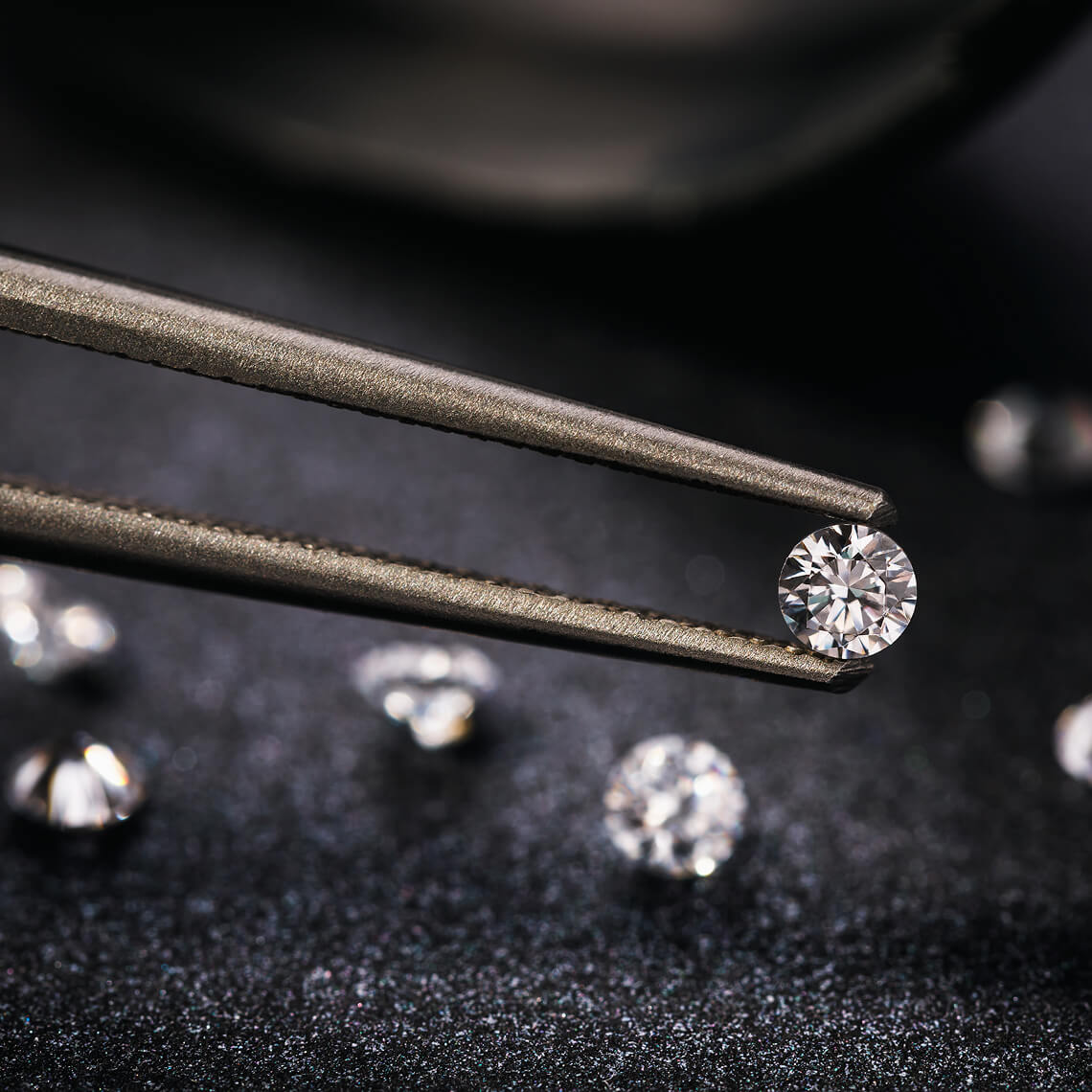
Your ‘perfect’ diamond is always the one that makes you smile, every time you look at it. So remember to keep this in mind while completing your purchase!
FAQs: Everything You Wanted to Know About Diamond Color and Clarity
What is the difference between diamond color and clarity?
Diamond color and clarity are two of the "4 C’s" that determine a diamond’s quality and value. Diamond color refers to how colorless a diamond appears, while diamond clarity looks at how free the stone is from inclusions and blemishes. Together, they affect your diamond's sparkle and brilliance.
What's more important, diamond color or diamond clarity?
It depends on what is most important to you! If you prefer a bright, colorless diamond, color should be your first choice, but if you want a flawless, crystal-clear look, go for a higher diamond clarity. The best option? A balance between both diamond clarity and diamond color that makes your eye happy and fits within your budget.
Can you see diamond inclusions with the naked eye?
Most of the time, no! Many inclusions are so small that they're only visible under magnification. Diamonds with clarity grades VS1 and VS2, are commonly eye-clean. When you're looking at clarity, remember you may not need the highest clarity grading to get a stone that looks flawless to the eye.

Do diamond color and clarity affect price?
Yes, the diamond color and clarity that you choose will have an impact on the price. The higher the diamond color and clarity grades, the rarer and more expensive the diamond becomes. But with lab-grown diamonds, you can often afford higher quality without breaking the bank.
Are colored diamonds real diamonds?
Without a doubt, colored diamonds are real diamonds. Fancy-colored diamonds in our Hues collection are every bit as real as colorless diamonds. They’re just graded according to a different standard, with diamond color as center stage rather than something to obscure as much as possible. Ideal as a creative, colorful, and impressive showpiece.
How do I choose the right diamond color and clarity for an engagement ring?
Start with the one that matters most to you, whether it is the sparkle, budget, or that certain look. Then, mix and match diamond color and clarity grades to see your options. You can always talk with a diamond expert to help with your search. We’re here to make it simple and fun for you at the same time!
Final Thoughts: Shine Your Way
Learning about diamond color and clarity doesn’t have to be so complex. Honestly, it’s rather like learning the order you love for your morning coffee. Once you get it, it’s second nature.
If you love the rustic appeal of a fancy yellow gem or the clear, crisp twinkle of a colorless diamond, there's a flawless stone out there with your name on it.
At Friendly Diamonds, we’re here to help you find it without the pressure, confusion, or jargon. Just good vibes, great information, and sparkling diamonds.
Choose Friendly Diamonds for a Friendlier Tomorrow!

